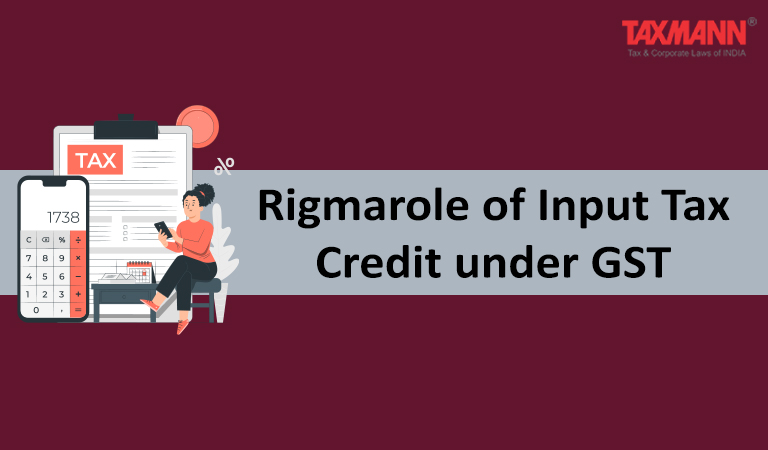Rigmarole of Input Tax Credit under GST
- Blog|News|GST & Customs|
- < 1 minute
- By Taxmann
- |
- Last Updated on 14 January, 2022

Aanchal Kapoor – [2022] 134 taxmann.com 109 (Article)
“Input Tax Credit”, the basis for bringing up India’s biggest Indirect Tax Reform to eliminate cascading effect of taxes and promote Seamless Credit, has become Rigmarole in light of multiple hurdles to break the free flow of Credit in the Tax Chain and Input Tax Credit seems to be lost ball in the weeds in form of:
a. Litmus test of Section 16,
b. Section 16(4) time limits,
c. Mischievous Rule 36(4),
d. Mysterious GSTR 2A/2B,
e. Blocking of credit as per Section 17(5),
f. Rule 86A(Blockage of Credit),
g. Rule 86B(1% Cash payment),
h. Reversals owing to 180 days condition,
i. Reversals pertaining to Rule 42/43,
j. ITC restrictions through Rate Notifications,
k. Broken limbs in form of GSTR 2 in absentia,
l. GSTR3B as proxy to GSTR 3,
In this article, the author has analysed several issues, legal position and the risks involved in availment of ITC in GST regime w.r.t Sec 16(2)(c) in light of Rule 36(4) & amendment relating to Section 16(2)(aa) and Section 16(4) Time Limits.
Click Here To Read The Full Article
Disclaimer: The content/information published on the website is only for general information of the user and shall not be construed as legal advice. While the Taxmann has exercised reasonable efforts to ensure the veracity of information/content published, Taxmann shall be under no liability in any manner whatsoever for incorrect information, if any.

Taxmann Publications has a dedicated in-house Research & Editorial Team. This team consists of a team of Chartered Accountants, Company Secretaries, and Lawyers. This team works under the guidance and supervision of editor-in-chief Mr Rakesh Bhargava.
The Research and Editorial Team is responsible for developing reliable and accurate content for the readers. The team follows the six-sigma approach to achieve the benchmark of zero error in its publications and research platforms. The team ensures that the following publication guidelines are thoroughly followed while developing the content:
- The statutory material is obtained only from the authorized and reliable sources
- All the latest developments in the judicial and legislative fields are covered
- Prepare the analytical write-ups on current, controversial, and important issues to help the readers to understand the concept and its implications
- Every content published by Taxmann is complete, accurate and lucid
- All evidence-based statements are supported with proper reference to Section, Circular No., Notification No. or citations
- The golden rules of grammar, style and consistency are thoroughly followed
- Font and size that’s easy to read and remain consistent across all imprint and digital publications are applied





